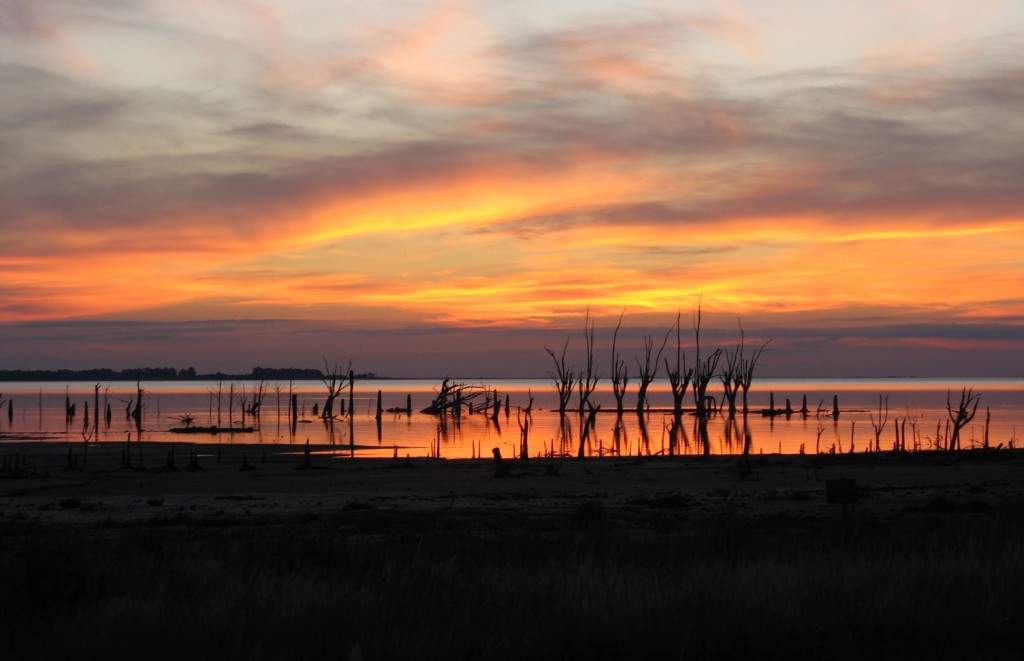Nice post about flamingo from Steve Zack, Coordinator of Bird Conservation, Wildlife Conservation Society. Below is the excerpt from this text:
“The flamingo species all feed on shallow saline wetlands, most often inland lakes. They move nomadically in time and space to feed, often in huge aggregations of thousands (even millions for Lesser Flamingos) of one or more species. They colonially breed on dry sites of such lakes in very caustic settings, keeping would-be terrestrial predators at bay.
Certain lakes are critical as breeding sites for at-risk flamingo species: Lake Natron, Tanzania is essential for Lesser Flamingos, Laguna Colorada in Bolivia is the main breeding site for James’s Flamingos, and Mar Chiquita Lake in Argentina is the most important for Chilean Flamingos. These lakes are threatened by mining and geothermal development.

Laguna Mar Chiquita (Argentina) – the important habitat for Chilean Flamingos.
Saline lakes occupy a similar surface area on the planet worldwide as fresh water lakes (although the volume of the latter is far greater). Yet the ecological understanding of how saline lakes “work” and their productivity patterns are poorly understood. We need to understand more of how these lakes function, and in particular why certain lakes are attractive to feeding flamingos at some times and not others.”
